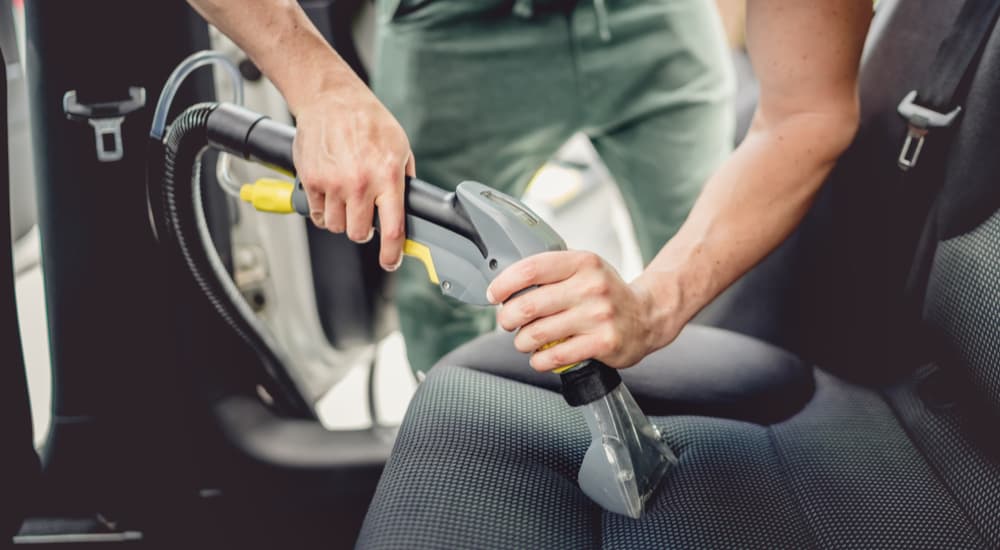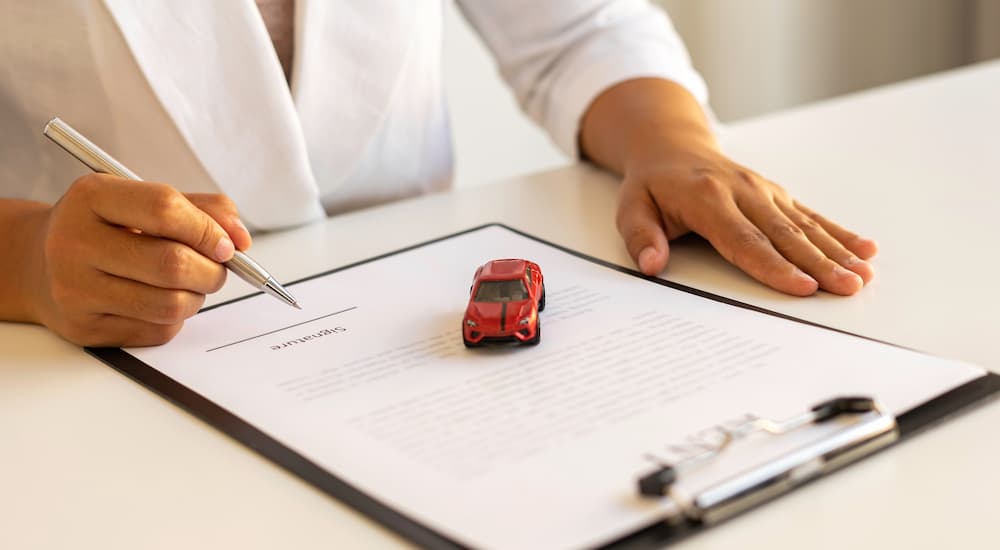There are a lot of people out there who are looking to buy a new or used vehicle and do so by using their current vehicle as a trade-in to purchase what they want. If you have a car that you no longer want, you can trade it in and use it as a down payment or just extra money off the purchase of your new one. But what is the best way to get the most value for your trade with the least amount of money put in? Cleaning! When it comes time to value your trade, you are going to want to put your best foot forward with something that feels new, or at least well taken care of, to get the most money, and cleaning is an easy and cheap way to do that.
Cleaning your car can have a big effect on trade-in value. Dents, dings, and scuff marks can have an apparent effect on the appraisal value of the vehicle, but there is also another factor: cleanliness. If the inside of your car is full of trash and the outside is covered in grime, the person appraising your vehicle is probably going to think that it wasn’t well taken care of and give you less money for it. However, if the inside is clean and doesn’t smell, while the outside is shiny because it was recently washed, you could end up getting more for it. It’s a simple task that can yield a large reward for you.
Why Cleaning Your Car Is Important for the Trade-In Value
Let me pose a hypothetical scenario to you. You are looking to purchase a vehicle, and you have two options. One is a sedan that is clean and smells fresh, with 80,000 miles on the odometer. Visually there is nothing wrong with the vehicle. The other option is a sedan that is caked in mud, at least you hope it’s mud, with fast food trash all over the floor and a distinct odor, but it only has 45,000 miles on it. Which car are you more likely to choose to buy? We would bet it’s the clean car with more miles because you don’t have to do any work to get it ready to drive, and your overall impression is that it was well taken care of.
The same idea is true when it comes to receiving a trade-in value. Whether it’s a sedan, a truck, or an SUV, having the interior cabin as clean as possible works wonders for the overall value. Why? Because it’s not only less work for the buyer to have to clean up the interior when they get possession of the vehicle, but it also means not having to invest money in cleaning or fixing up the cabin. You’re reducing costs that have to be spent on bringing your vehicle up to par.
Additionally, a cleaned-up exterior and cabin both go a long way in giving potential buyers a feeling of value. If the car is dirty, the seats are torn, the fabric ripped, the leather scuffed, and amenities are missing or damaged, people might assume that you also haven’t taken good care of the engine and that the car will likely break down. Cleaning up the vehicle and ensuring it’s in the best shape you can get it in goes a long way to increasing its resale value.

What Should I Clean Up, and How Much Should I Spend?
Spending $0 is always going to be the best potential outcome for cleaning up and cleaning out your vehicle before valuing your trade. If you can get the car spotless both inside and out before an appraisal and not have to spend much or anything doing it, it really is the best possible outcome you could hope for. However, that doesn’t mean this is possible for every case of trading in a vehicle.
Typically you will have to spend something on getting the vehicle cleaned up to near-new status, whether it’s buying cleaning supplies or acquiring materials to repair or replace some items. Some stuff is cheap and easy, like cleaning out any garbage or personal items and using your vacuum to get rid of dirt and dust. Other things may cost a little bit but are worth it, like bringing the car through a car wash or buying the supplies to wash it yourself.
Some things may be cheap and easy if you know how to do them, but can be pricey if you don’t. For example, if the fabric is ripped or torn in any place, a good stitch job goes a long way, but if you don’t know how to repair the fabric or don’t know anyone who can, you may have to pay to have it repaired or replace the seat entirely. Other major repairs or replacements might be movable objects, like power seating or compartments that open and close. You may not be able to do much if the seating mechanism is damaged, but if the compartments are damaged or missing their closures, you may be able to fish around for OEM replacement parts. If the missing items aren’t noticeable or don’t change the general functionality of the in-cabin features, then it may not be worth fretting over.
The main focus should be on removing any trash or lingering items from the floor, compartments, or trash bins. Cleaning up and washing any floor liners or carpeting is another important cleaning procedure, along with washing down the exterior, cleaning any surfaces that may have stains on them, and polishing any reflective surfaces. Don’t forget to wash the windows on the inside and outside. Again, accomplishing this while spending as little as possible is the best way to get the most value for your trade.

How Do Dealerships Inspect and Value a Trade?
Consider that whatever cleaning, work, or fixes you don’t do, the dealership will have to compensate for that. Typically used cars go through what’s called a reconditioning or detailing process. This typically involves a checklist of inspections, repairs, cleaning, and fixes that a dealership will utilize to get the used vehicle back into resale condition and available for purchase from prospective buyers. If this sounds like an expensive process, it’s because it sometimes is.
Reconditioning or detailing can be a short or long process, depending on the amount of work required and the priority of getting the vehicle back out on the lot. Reconditioning can cost some dealerships, on average, hundreds of thousands of dollars a year. Detailing can be less expensive but still costly depending on what’s required to get the vehicle in a presentable state. This is due to having to not only test and sometimes replace parts but also having to refurbish the interior, replace fabrics and seats, clean out the vehicle if it wasn’t done beforehand, and give it a thorough wash down.
Some dealerships have a robust inspection process that they go through before the vehicle is approved for resale, and if the interior doesn’t pass that checklist, then it means having to spend more time and money to fix or replace parts to bring the vehicle up to par. This is why it’s important to clean the vehicle up on your end because it means less work for the dealership.
Clean Your Car to Get the Best Trade-In Value
As mentioned, dealerships spend a lot of money reconditioning or detailing used vehicles, so the more you do to clean up and get your vehicle in proper working order means less time, money, and manpower spent getting your vehicle up to the dealership’s standards. The more that’s spent on reconditioning the vehicle means less money for the dealership in turnaround. This can also vastly affect what you get for trading in your vehicle. That’s right, the less the dealership has to spend, the more you get back.
Even if you are trading in a vehicle that is highly desired on the market and has a well-maintained engine, you will still get less money for it if it is a mess. While it may not need any mechanical repairs, cleaning and detailing takes time, resources, and money, which means you will get less money. So, in short, if you’re thinking about trading in your vehicle, definitely clean it to the best of your ability. It’s quick, easy to do, and will get you a better value for your trade overall.



